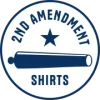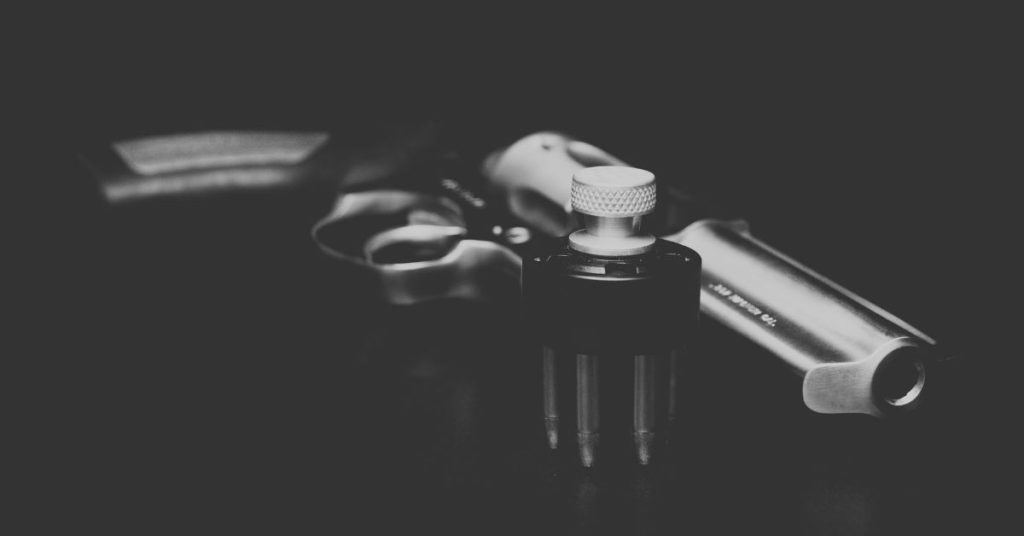Using.357 Magnum ammo for range training gives the shooter options regarding the type of weapon. The ammunition switches easily from a handgun to a rifle for a well-rounded test of one’s skills.
The .357 cartridge remains popular with trainers, hobbyists, and professionals because of its versatility. Additionally, a .357 Magnum handgun can fire a .38 Special ammo.
The cases of the two rounds match each other except for the length. Manufacturers made that deliberate design choice to prevent shooters from firing the .357 from a.38 Special revolver.
The .357’s pressure rates higher than a .38 Special and could cause harm to the shooter or damage to the handgun.
History
The .357 Magnum cartridge was designed and developed in the mid-1930s by a team of firearms enthusiasts. The project goal included creating ammunition that could compete with Colt’s .38 Super. Elmer Keith, Phil Sharpe and D.B. Wesson of Smith & Wesson and Winchester joined forces to top Colt’s breadwinner.
Criminals began to outsmart police and the police needed to fight back. Colt’s .38 Super was the only ammo on the market that fired at over 1,000 FPS. High velocity gave the ammo the ability to penetrate auto glass and ballistics vests.
The gangster era had begun, and the cops couldn’t take down targets when they hid behind their automobiles or wore bulletproof vests.
The .357 Magnum ammo allowed law enforcement to retake the streets while providing a versatile round for military, law enforcement, and civilians.
Current specs
The design team modified the original .357 Magnum slightly to incorporate Sharpe’s bullet. Currently, it’s known as the .357 S&W Magnum or 9x33mmR.
The rimmed centerfire cartridge houses a .357-inch (9.1mm) diameter bullet housed in a case measuring 1.29-inches in length. The total length of the cartridge is 1.59-inches.
According to SAAMI, the ammo’s maximum pressure is 35,000 PSI with an average muzzle velocity of 1,090 FPS.
The 1924 design loaded the .357 load with a bullet weight of 158 grains. The muzzle velocity clocked at an impressive 1,510 FPS. Today’s loads offer less muzzle velocity but enough to make the round effective and deadly when needed.
Shooters chamber light carbines in .357 Mag ammo, often for use in guns similar to the American Old West lever-action rifles. Specs differ in a rifle. The ammo exits a rifle barrel at around 1,800 FPS. The high velocity makes the round more versatile popular guns like the .32-20 Winchester.
Popularity and Use
The .357 Magnum ammunition received notoriety for kicking off the “Magnum Era.” The .357 Magnum revolver sparked the attention of law enforcement and military personnel.
Soldiers used the gun and ammo throughout WWII and the Vietnam War. General George S. Patton chose the gun as one of his favorite sidearms. He carried an ivory-handled S&W .357 Magnum revolver on one hip and a single action .45 Long Colt on the other.
Law enforcement, military personnel and members of the U.S. Special Forces still use .357 Magnum handguns, mostly as back up pieces to semi-auto pistols.
Shooters continue to choose the dual-purpose cartridge because it is powerful, inexpensive, and can be used in both.357 Magnum handguns and rifles.
Most common uses include range training, plinking, home defense, hunting, target shooting, and self-defense. It offers excellent stopping power with manageable recoil.
Range Training
Seasoned shooters recommend regular range training regardless of the person’s experience. Range training keeps a person sharp and improves skills. It also allows shooters to test drive different guns and ammo to see which works best for their needs.
Shooting ranges operate in rural and urban areas. Rural areas host more outdoor ranges since there isn’t a concern about shooting into a building or street. Urban areas have more indoor shooting galleries due to limited space.
The containment dampens noise, prevents collateral damage, and other concerns. Indoor ranges operate despite weather conditions. They often restrict caliber and weapon use where outdoor ranges are more accommodating to unusual requests.
Hunters prefer outdoor ranges because the terrain and atmosphere are similar to what they might encounter in the field. Shooting competitions occur most often at outside ranges.
Using Your Ammo
Shooting .357 ammo deters some users from taking it to the range due to a few downsides. First, firing a .357 indoors causes damage to the shooter’s ears, perhaps even if the shooter is wearing hearing protection. The loud report throws off a person’s accuracy and causes one to hesitate when making a second shot.
Some shooters chose a .38+P to make follow up shots to avoid the noise. Second, some find the recoil to be too strong. This is especially true when the ammo is used in a short barrel, orsnubnose, revolver.
Third, a bright muzzle flash causes temporary blindness in the dark. The latter proves to be a problem in a self-defense situation at night.
The real problem lies in the fact that many shooters practice with one ammunition and intend to use another. That makes no sense. Shooters must experience a certain comfort level with the gun and the ammo.
If the combination causes problems, then the user should switch to another gun, ammunition, or both. Inexperience or discomfort leads to poor aim and inability to pull the trigger.
The shooter freezes at the crucial moment, whether it’s in the field, or during a competition when faced with a large animal or intruder.
Performance
People train for many purposes, including hunting. The .357 ammo performs well against medium-size game like whitetail deer, hogs, and coyotes. Heavier loads face-off with large game like elk, caribou, and bear.
Some hunters prefer big bore cartridges like .41 Mag, .44 Mag, .454 Casull, 460 S&W Mag or .50 Action Express. While the .357 gives off less energy, its small diameter and high velocity serve up deep penetration.
The round is similar to a .45 Colt but with a flatter trajectory. Those specs make it highly versatile ammunition desirable to many hobbyists and professionals.
Bullet Types
Manufacturers develop new ammunition every day for popular calibers like the .357 Magnum. The most common styles include Full Metal Jacket, Jacketed Soft Point, Jacketed Hollow Point. The list below shows three common types of bullets and their uses.
Full Metal Jacket (FMJ)
FMJ bullets cost less than other rounds which makes them ideal for high volume shooting at the range. The bullet houses a soft center metal (often lead), surrounded by a harder metal, usually copper.
The ammo cuts small channels upon impact and as they travel into, or through, the target. FMJs work best in short-range shooting, target practice, range training, plinking, and competition shooting.
Hollow Points (HP)
Most people associate hollow points to self-defense and home protection. HPs cost more than FMJ, but the round performs better in face-to-face confrontations. The ballistics of HPs are comparable to the FMJ.
HPs work best as concealed carry for home protection use. The design allows the bullet to expand, creating a larger wound channel than the FMJ. The expansion offers excellent stopping power, halts attackers quickly and therefore, the shooter is protected.
Soft Points (SP)
Hunters choose soft points more than any other ammunition. The SP expands over and above an FMJ, which makes it ideal for stopping the target in its tracks. The round is comparable to an HP, except for the expansion.
An SP allows the shooter to have more control. SP ballistics outshine other bullets, especially when they are made with a boat-tail design. Jacketed Soft Points (JSP) are another option.
Best .357 Mag Training Ammo
| Muzzle Velocity | Grain | Type | Casing | Primer | Muzzle Energy | |
| Sellier & Bellot 158 Grain FMJ-FN | 889 FPS | 158 | Full Metal Jacket Bullet | Nickel-Plated Brass | Boxer | 278 ft-lbs. |
| Tula Ammo 158 Grain FMJ | 1,280 FPS | 158 | Full Metal Jacket Bullet | Steel | Boxer | 464 ft-lbs. |
| Fiocchi 142 Grain FMJ-TC | 1,420 FPS | 142 | Full Metal Jacket Bullet | Nickel-Plated Brass | Boxer | 636 ft-lbs. |
| Hornady Critical Defense 125 Grain FTX | 1,500 FPS | 125 | FlexTip Bullet | Nickel-Plated Brass | Boxer | 824 ft-lbs. |
| Magtech Ammunition 158 Grain .357 Magnum SJSP | 1,235 FPS | 125 | Full Metal Jacket Bullet | Nickel-Plated Brass | Boxer | 535 ft-lbs. |
| Tula Ammunition 158 Grain FMJ | 1,280 FPS | 158 | Full Metal Jacket Bullet | Polymer Coated Steel | Boxer | – |
| CCI Ammunition Blazer 158 Grain JHP | 1,150 FPS | 158 | Jacketed Hollow Bullet | Nickel-Plated Brass | CCI | 464 ft-lbs. |
| Sig Sauer Elite Performance Ammunition 125 Grain FMJ | 1,450 FPS | 125 | Full Metal Jacket Bullet | Nickel-Plated Brass | Boxer | 584 ft-lbs. |
| Magtech Sport Ammunition 125 Grain FMJ | 1,405 FPS | 125 | Full Metal Jacket Bullet | Nickel-Plated Brass | Boxer | 548 ft-lbs. |
| Speer Gold Dot Short Barrel Ammunition 135 Grain JHP | 990 FPS | 135 | Jacketed Hollow Point Bullet | Nickel-Plated Brass | Boxer | 294 ft-lbs. |
| Hornady LEVERevolution 140 gr FTX | 1,440 FPS | 140 | Hornady FTX Bullet | Nickel-Plated Brass | Boxer | 644 ft-lbs. |
| Ruger ARX 86 Grain | 1,650 FPS | 86 | Injection Molded Copper Polymer ARX Projectile | Brass | Boxer | 552 ft-lbs. |
| Barnes VOR-TX, XPB HP, 140 Grain | 1,170 FPS | 140 | Solid Hollow Point Bullet | Nickel-Plated Brass | Boxer | 429 ft-lbs. |
| Federal American Eagle Cartridge 158 Grain JSP | 1,240 FPS | 158 | Jacketed Soft Point Bullet | Nickel-Plated Brass | Boxer | 530 ft-lbs. |
Conclusion
.357 Magnum ammunition continues to be a popular round with many uses. Experts recommend extensive range training with any new ammunition or weapon. Situations happen quickly, often leaving the shooter without time to think.
Preparing yourself can mean the difference between life or death. Consider trying several types of ammunition in different bullet weights before deciding which works best for your skillset, experience, and end use.

